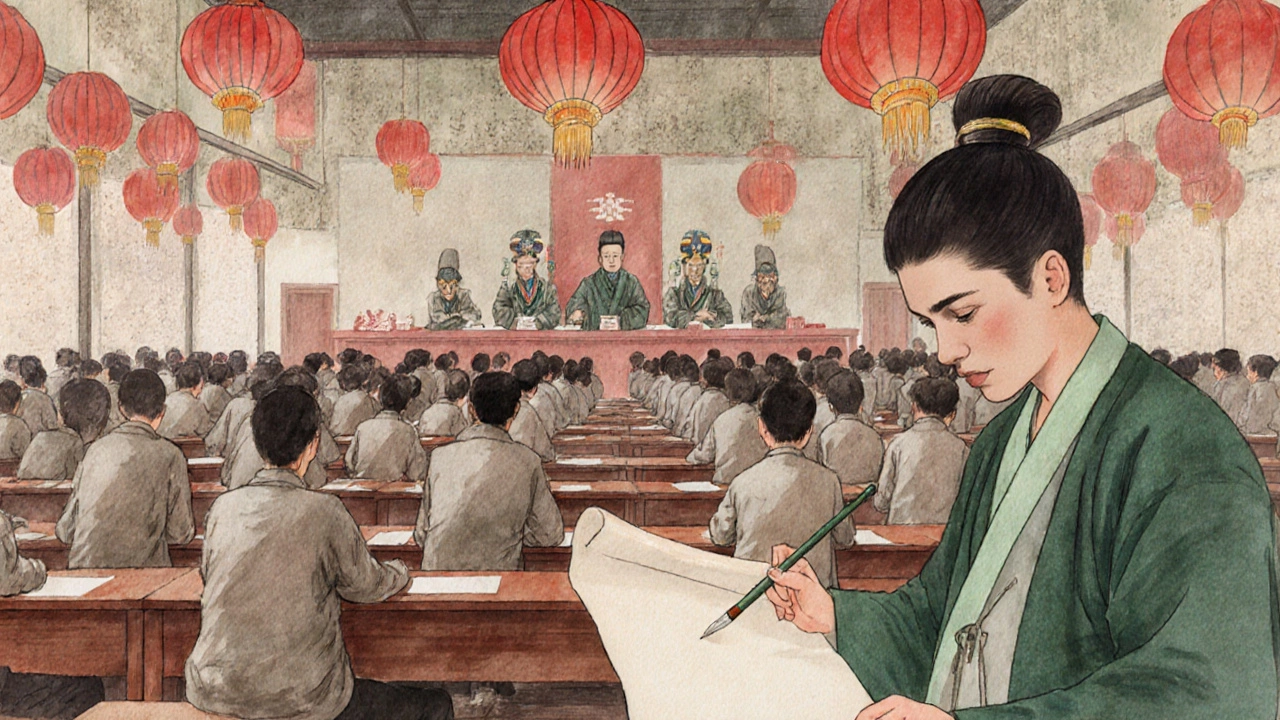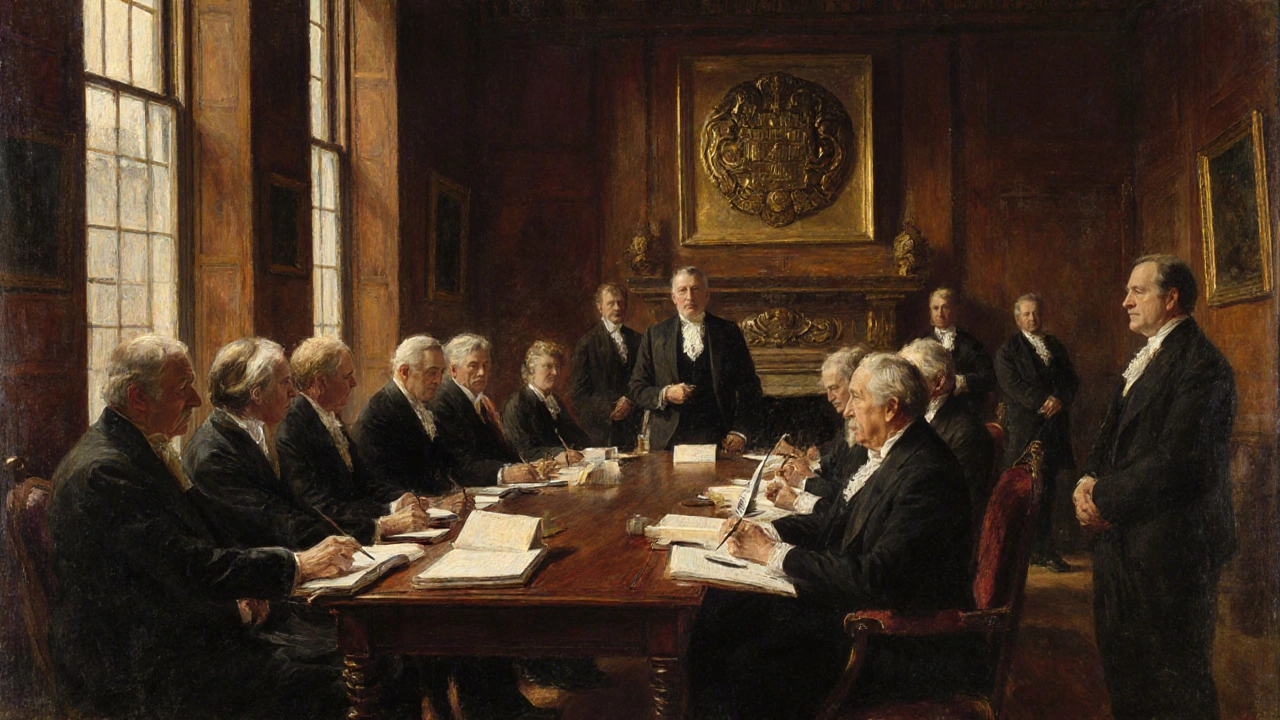Civil Service History Timeline
Ancient Egypt
~3000 BC
Region: Ancient Egypt
Scribes and overseers managed grain collection and building projects
Imperial China
581 AD
Region: Imperial China
First formal civil service exams (keju) introduced during Sui dynasty
France
1800
Region: France
Napoleonic Code standardized administrative structures across French territories
Britain
1855
Region: United Kingdom
Establishment of the Civil Service Commission introducing competitive exams
This timeline shows key milestones in the evolution of civil service systems worldwide. Click on any marker to learn more about each historical development. Understanding these origins helps contextualize modern civil service principles like merit-based recruitment and professional administration.
When you hear the phrase civil service history, you might picture modern government offices, but the idea goes back millennia. Understanding Civil Service a permanent bureaucracy that implements public policy, independent of political changes helps you see why today’s training programs matter.
Why Knowing the Start Date Matters
Because the roots of the civil service shape today’s recruitment, merit‑based exams, and career pathways. If you’re looking into civil service training, you’ll want to know which reforms created the standards you’re now studying.
Early Precursors: From Ancient Egypt to Imperial China
Historians agree that the very first bureaucratic structures appeared in ancient societies that needed to manage resources, taxes, and labor.
- Ancient Egypt used scribes and overseers to collect grain and coordinate building projects as early as 3000 BC.
- In Imperial China the civil service exam (keju) was formalised during the Sui dynasty (581‑618 AD) and expanded under the Tang and Song dynasties, creating a merit‑based pool of administrators.
Both examples illustrate that a stable, professional bureaucracy predates modern nation‑states.
The Birth of the Modern Civil Service in Britain
The phrase “civil service” as we use it today really takes shape in 19th‑century Britain.
- 1832 - The Northwest Ordinance U.S. legislation that urged a merit‑based civil service for the western territories hinted at the idea, but Britain led the way.
- 1854 - Sir Charles Trevelyan a British civil servant who advocated for impartial, professional administration published a pamphlet demanding reform.
- 1855 - The Civil Service Commission established by the British government to introduce competitive exams and remove patronage marked the official start of the modern system.
These steps turned a patronage‑heavy system into a meritocratic one, laying the groundwork for today’s training curricula.

Continental Europe: Napoleonic and Post‑Revolution Reforms
France followed suit after the Revolution, but the real overhaul came under Napoleon.
- 1800 - The Napoleonic Code standardised legal and administrative structures across French territories, creating a uniform civil service.
- 1850s - The French government introduced competitive exams (concours) similar to Britain’s, cementing merit‑based hiring.
Other European nations copied these models throughout the 19th century, spreading the concept of a professional bureaucracy.
Comparison of Early Civil Service Origins
| Region | First Formal Structure | Key Reform | Year |
|---|---|---|---|
| Ancient Egypt | Scribes & overseers | Tax grain collection system | ~3000 BC |
| Imperial China | Civil service exams (keju) | Merit‑based recruitment | 581 AD (Sui dynasty) |
| Britain | Civil Service Commission | Competitive examinations | 1855 |
| France | Napoleonic administrative reforms | Standardised civil service | 1800 |

How the Early Systems Influence Modern Training
Today’s civil service training programs echo the principles set in the 19th century: impartiality, merit, and professional development. For example:
- Competitive exam preparation mirrors the Chinese keju and British civil service tests.
- Ethics modules draw from the Napoleonic emphasis on rule of law.
- Leadership courses echo the British civil service’s focus on administrative continuity.
Understanding the historical timeline helps you see why a modern trainee must master both policy analysis and core administrative values.
Key Dates to Remember
- 3000 BC - Scribe bureaucracy in Ancient Egypt.
- 581 AD - First formal civil service exams in Imperial China.
- 1855 - Establishment of Britain’s Civil Service Commission.
- 1800 - Napoleonic Code’s impact on French administration.
These dates give you a quick reference that you can slot into any training syllabus.
Frequently Asked Questions
When did the modern British civil service officially start?
The turning point was the creation of the Civil Service Commission in 1855, which introduced competitive exams and ended patronage hiring.
Did any other ancient civilization have a civil service?
Yes. Ancient Egypt employed scribes and overseers as early as 3000 BC, and Imperial China introduced merit‑based examinations during the Sui dynasty (581‑618 AD).
How did the Napoleonic reforms affect civil service?
Napoleon’s Code standardized administrative procedures across French territories, establishing a uniform civil service that later influenced other European nations.
Why are civil service exams still important today?
Exams ensure that recruitment is based on competence rather than connections, a principle that dates back to the Chinese imperial exams and the British reforms of the 1850s.
Can I trace my training back to these historical roots?
Absolutely. Modules on ethics, merit‑based selection, and administrative law are direct descendants of the reforms that defined the civil service centuries ago.





Write a comment